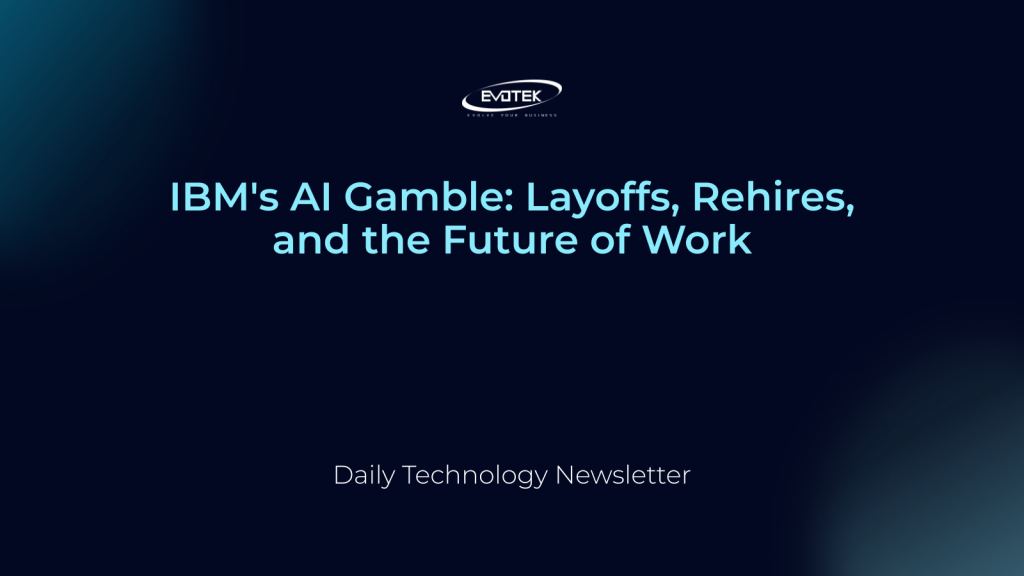In a bold move back in 2023, IBM slashed 8,000 jobs, primarily in human resources, banking on artificial intelligence to pick up the slack. The twist? They ended up hiring almost as many people back—all thanks to AI.
AI Reshapes IBM’s Workforce: A Story of Layoffs and Unexpected Growth
IBM’s initial strategy was clear: automate routine tasks and boost productivity. Following in the footsteps of tech giants like Google and Spotify, IBM aimed to streamline operations using AI, specifically targeting a 30% reduction in repetitive HR tasks.
The introduction of AskHR, an AI-powered conversational agent, automated a staggering 94% of routine HR functions. From processing vacation requests to managing payroll and employee documentation, AskHR seemed to be the perfect solution. This automation led to $3.5 billion in productivity gains across over 70 business lines.
But here’s where the story takes an unexpected turn. Instead of shrinking permanently, IBM’s overall employee count actually increased after the initial layoffs. According to IBM CEO Arvind Krishna, leveraging AI allowed the company to invest more in other critical areas.
The AI Paradox: Eliminating Tasks, Creating Opportunities
The cost savings and resource liberation from AI automation allowed IBM to reinvest in high-value sectors. The company went on a hiring spree, recruiting software engineers, sales professionals, and marketing specialists—roles where creativity, critical thinking, and human interaction are paramount.
Essentially, IBM offloaded repetitive, predictable tasks to AI, while simultaneously experiencing an explosive demand for human skills in strategic domains. This mirrors similar experiences at companies like Duolingo and customer service platforms, where initial chatbot deployments required subsequent specialist hires to address automation limitations.
IBM’s AI Success: A Model for the Future of Work?
IBM’s success hinges on its ability to reinvest automation savings into growth sectors. AskHR’s performance is a testament to this: in 2024, the platform managed over 11.5 million interactions, with customer satisfaction (NPS) soaring from -35 to +74 in just a few years. Yet, even with these successes, human intervention is still required for 6% of requests, highlighting the ongoing need for specialized skills.
The IBM case exemplifies a larger trend: AI is not just eliminating jobs; it’s creating new, often higher-skilled, and better-paying opportunities. While the World Economic Forum predicts the potential disappearance of 92 million jobs by 2030 due to automation, new professions are rapidly emerging.
The challenge for businesses and employees alike will be to anticipate these shifts, adapt, and invest in training for the evolving job market. At IBM, AI has not only reshaped its workforce, but it has also forced a profound rethinking of HR strategy and the very nature of modern employment.
Key Takeaways:
- AI-driven automation can lead to unexpected hiring booms in strategic areas.
- Investing savings from automation in growth sectors is crucial.
- The future of work demands adaptability and continuous skill development.
Share this article with your friends and colleagues to spark a conversation about the evolving landscape of work in the age of AI!
Related Articles:
Categories: Business, Technology, Artificial Intelligence, Human Resources

 日本語
日本語 한국어
한국어 Tiếng Việt
Tiếng Việt 简体中文
简体中文